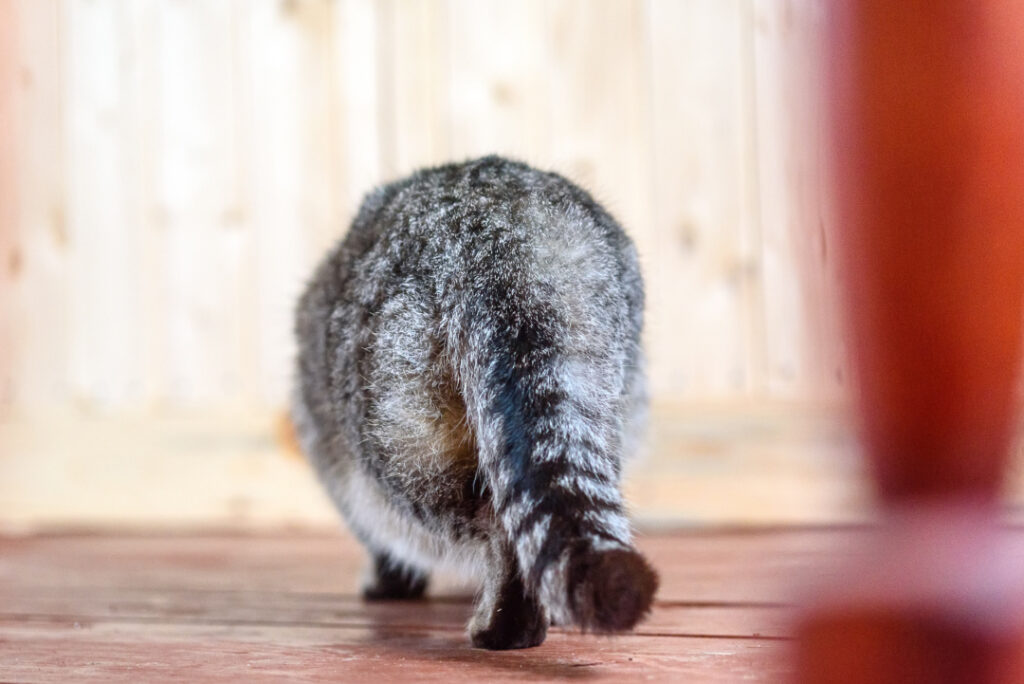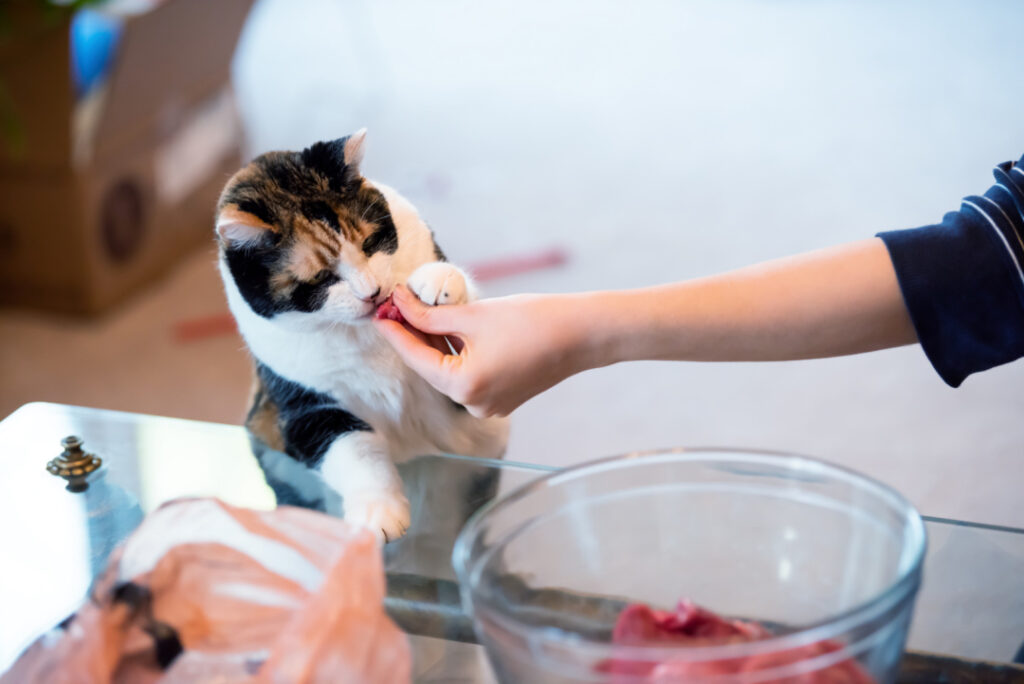
VETERINARY MEDICINE (Grenoble, France) Toxoplasmosis gondii is an indiscriminant single cell organism that can infect most warm-blooded animals worldwide (including humans and even birds). While it’s not picky about whose muscle tissue it inhabits, it’s very shy where it does the nasty. Out of all the living organisms in the entire universe, within the privacy of a cat’s intestines is the only place where the magic happens. (That’s big cats, domestic cats, Cat in the Hat, any cat.)
Inside a cat it’s too dark to see
Scientists haven’t been able to observe toxoplasmosis hanky panky because (to rephrase Groucho Marx) inside a cat it’s too dark.
Until 2019, the United States Department of Agriculture (USDA) used artificially infected kittens to incubate the protozoa for research purposes. But it was a short tenure for Fluffy.
According to the Cornell Feline Health Center, “Newly exposed cats usually begin shedding oocysts (eggs) three to 10 days after consuming infected tissue, and continue shedding for around 10 to 14 days.”

The poor research kitties’ usefulness spanned only two weeks. Once they stopped dropping magic turds, it was curtains. Typical government waste mentality. The USDA didn’t want to rehome infected kitties (even if they weren’t contagious!) They decided they should kill their furry incubators rather than the parasite. Treatment is no big deal—just a course of clindamycin and, sometimes steroids should take care of toxo. Even if the cat isn’t treated, it can’t transmit/pass on the parasite because he no longer sheds eggs.
USDA Idiocy
Finally in April 2019 the USDA’s Agricultural Research Service (appropriate acronym ARS) stopped researching the parasite on kittens because U.S. citizens didn’t like their tax money going to kill kitties unnecessarily.
In the USDA announcement, I noticed sneaky wording. It said, “…the use of cats as part of any research protocol IN ANY ARS LABORATORY has been discontinued and will not be reinstated.” Notice the phrase “in any ARS laboratory.” It didn’t say research on cats had stopped. Research in their own laboratories stopped. Just saying. What about contracted laboratories like Wuhan? Huh?

Stopping research on toxoplasmosis is unfortunate, because the parasite can harm fetuses of women who were infected while they are pregnant. So research is important, but they didn’t need to off the kitties once they cease to produce the eggs.
Toxoplasmosis and pregnancy
Don’t freak out, pregnant ladies. Remember, cats can only shed the parasite for the first two weeks. Even during that communicable 2 week period, the oocysts aren’t immediately infectious to humans or other animals.
According to Cornell, “Before becoming infectious, they [oocysts] must go through a process called sporulation, which takes one to five days depending on environmental conditions.”
Have someone else scoop the box for you every day and wash your hands and you and your little bun will be just fine. (Don’t take my word. Read the sources below.)

Most common ways of being infected
By the way, toxo may only be able to make little protozoa inside a cat, but according to the Centers for Disease Control, humans become infected by:
- Eating undercooked, contaminated meat (especially pork, lamb, and venison) or shellfish.
- Accidentally ingesting eggs after handling contaminated meat or shellfish and not thoroughly washing hands.
- Cutting raw meat and then slicing veggies with the same unwashed knife.
- Not thoroughly washing your hands after gardening.
There’s good news, research is back on and no kittens will be harmed in the pooping of these protozoa.
Although biologists haven’t been able to fully reproduce (pun intended) the entire love-making cycle of toxo, they’re getting there. Recently, research out of Grenoble Alpes University in France came up with a gene editing technique that pushes the parasite toward sexual congress in the laboratory. The new technique can only replicate the toxo foreplay. No big bang yet. Maybe try some protozoa porn to get them in the mood.
Something’s Missing
The missing piece could be some ingredient or compound inside the cat’s intestines that triggers reproduction. Maybe they’re just too shy to shag with the lights on. Maybe the sound of gurgling cat guts is the toxo equivalent of Barry White singing, “Let’s Get It On” or “Earned It” from 50 Shades of Amoeba.” Scientists are still working on it.
In addition to saving kittens, the new research could help researchers identify drugs that halt or accelerate different stages of the parasite’s life cycle, and perhaps even make it sterile.












Recent Comments